We have established that the Hero Asset for the scene will be a statue that is guarded, upkept and overseen by the monks. So I started getting some potential references to help develop the concept. I went back to an artist called Peter Mohrbacher I found during my foundation which does Angel concepts based on things like Tarot and Starsigns.
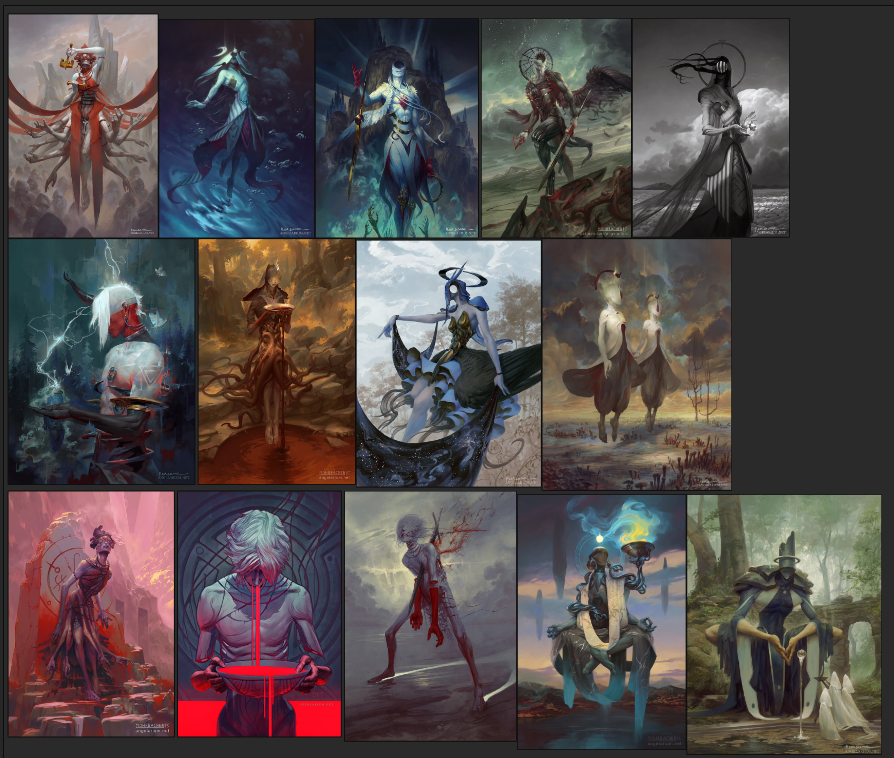
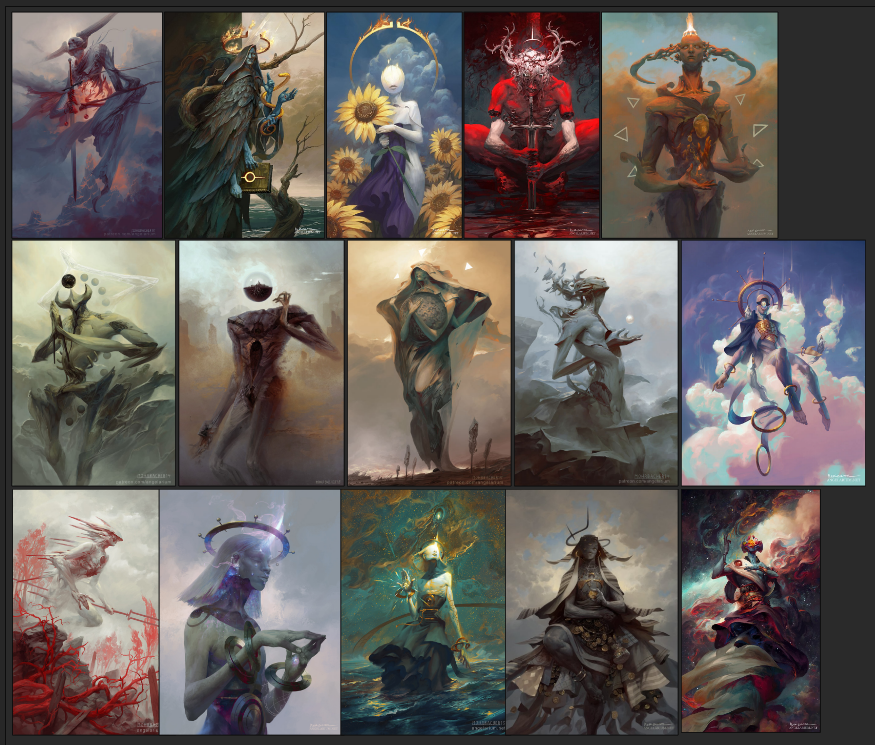
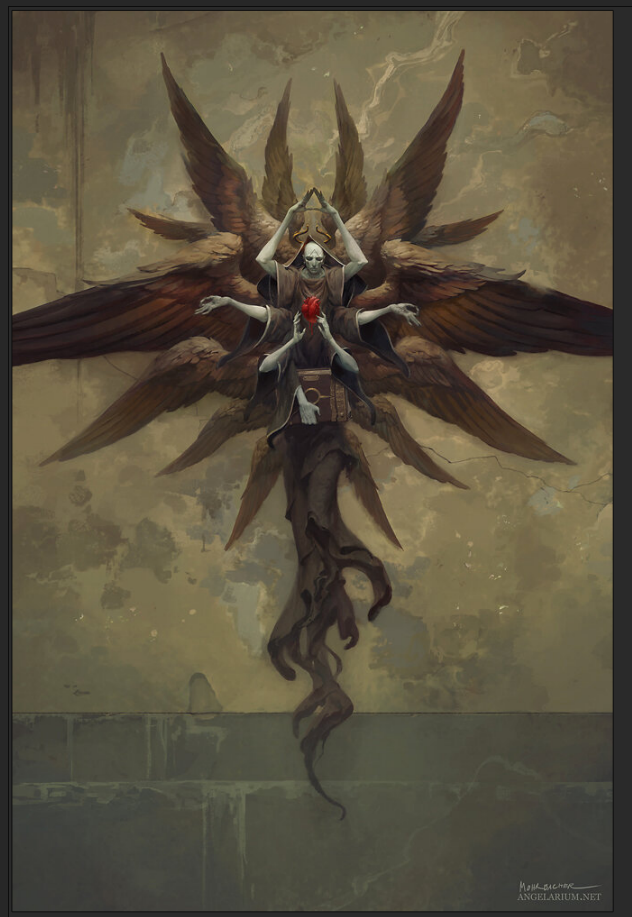
This last one with the multiple arms and wings felt fitting of the theme and was something me and Laura both agreed was a good initial concept to develop.
We also wanted to look into more sci-fi aesthetic designs and find a nice balance that would compliment our scene. We kept coming back to the idea of beautiful and scary so tried not to prioritise one over the other too much.
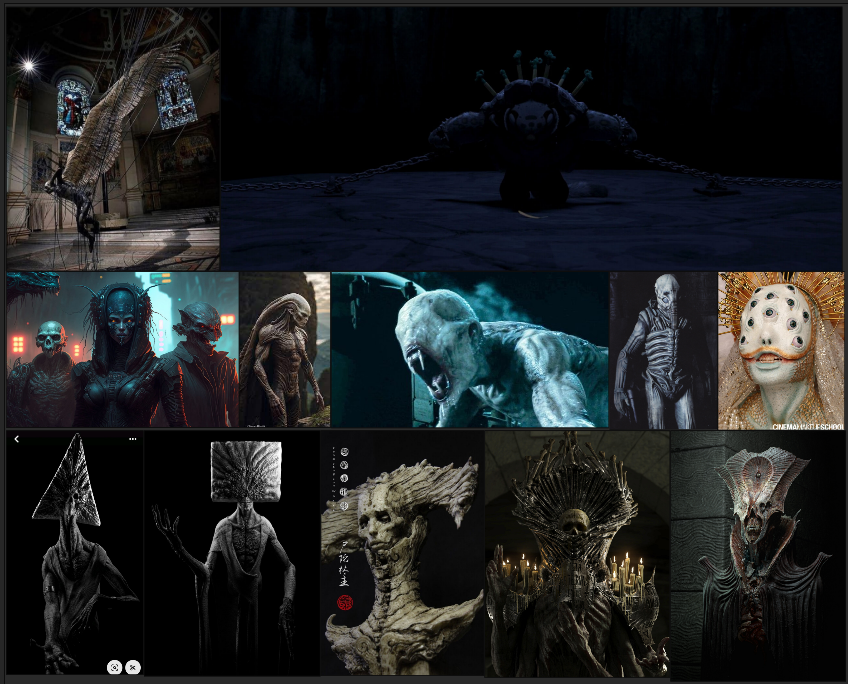
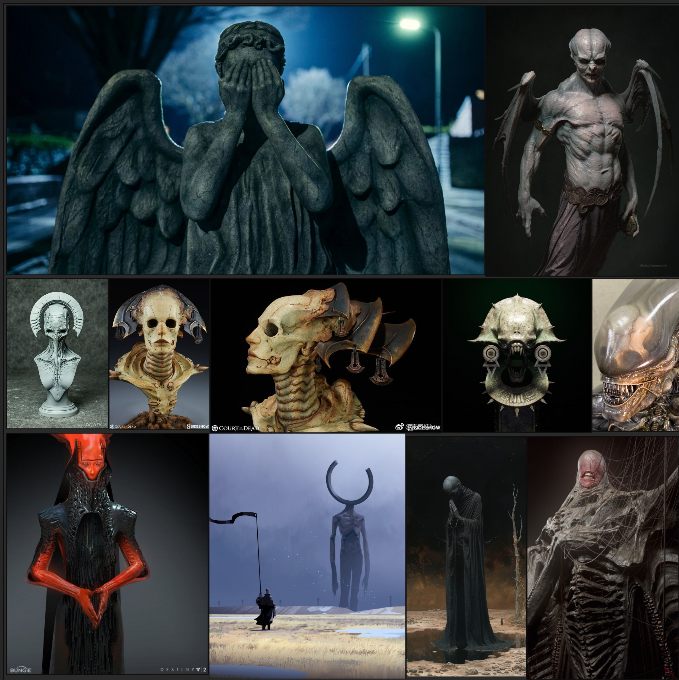
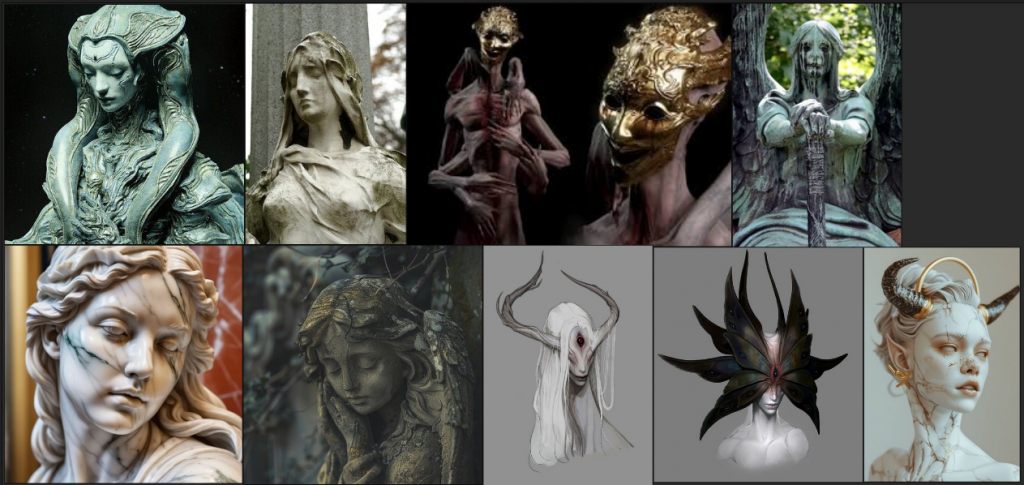
With these references in mind I went into ZBrush to do a quick sculpt to try and develop the ideas further for a paint over.
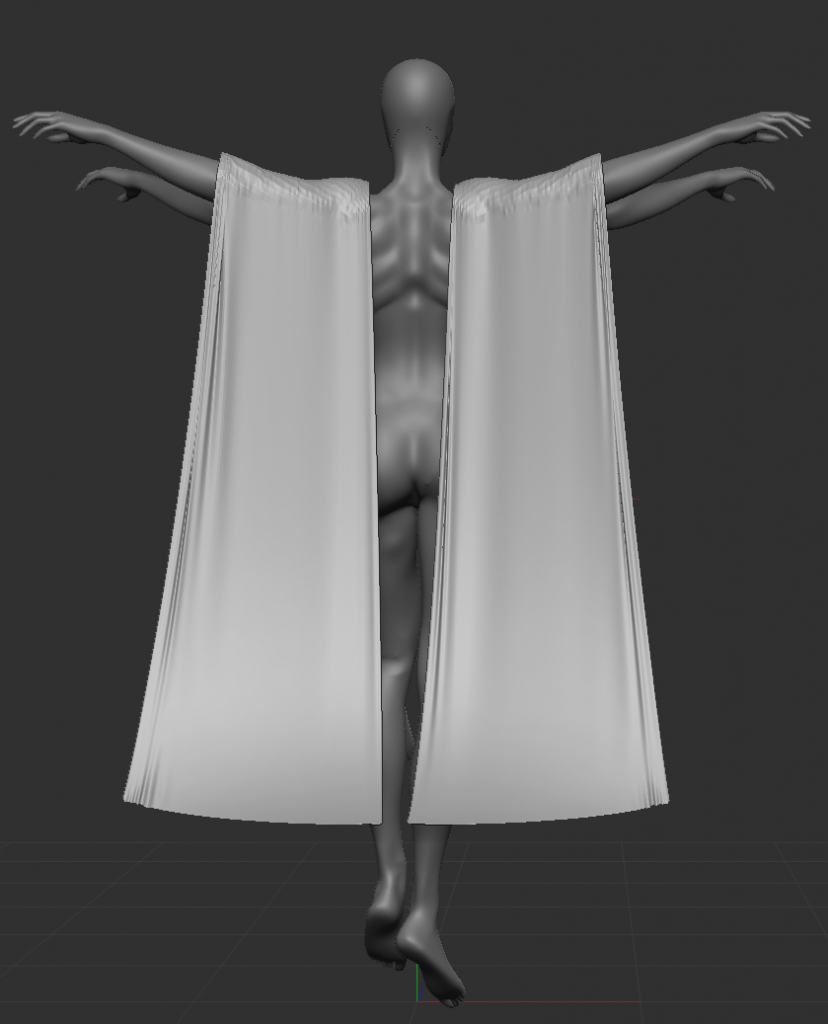
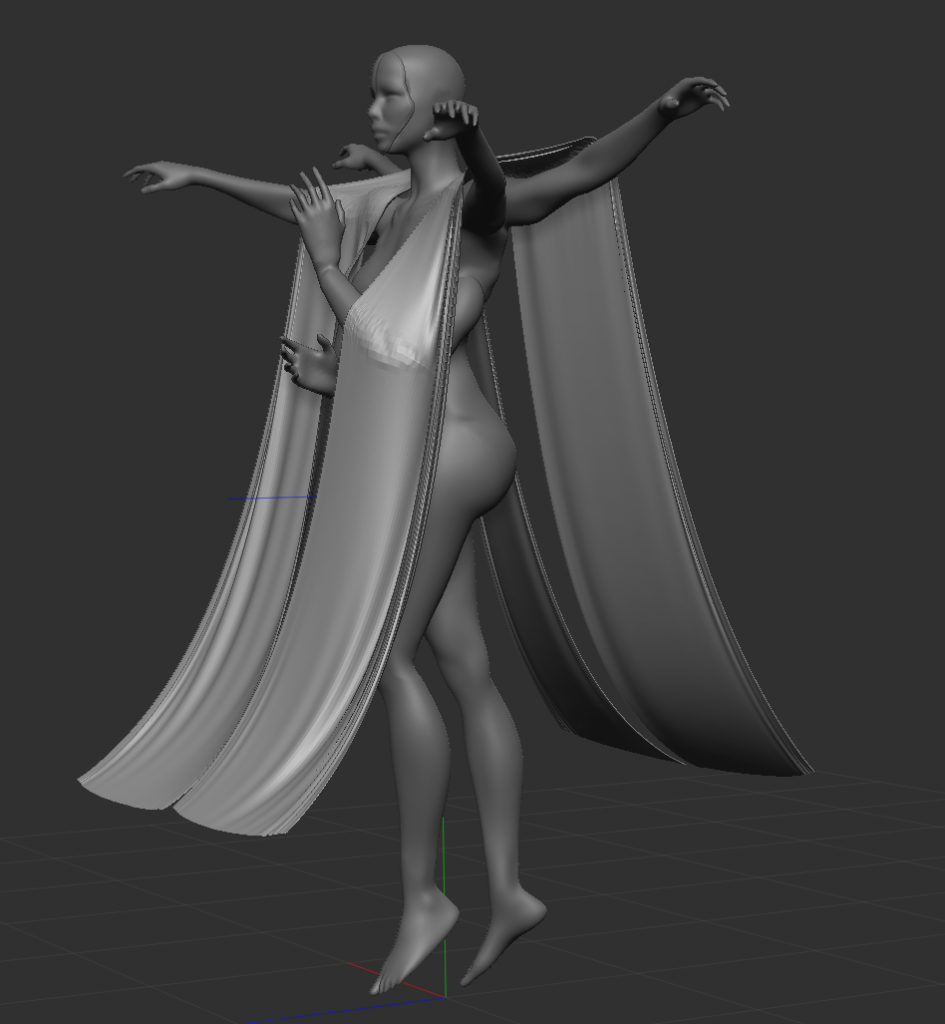
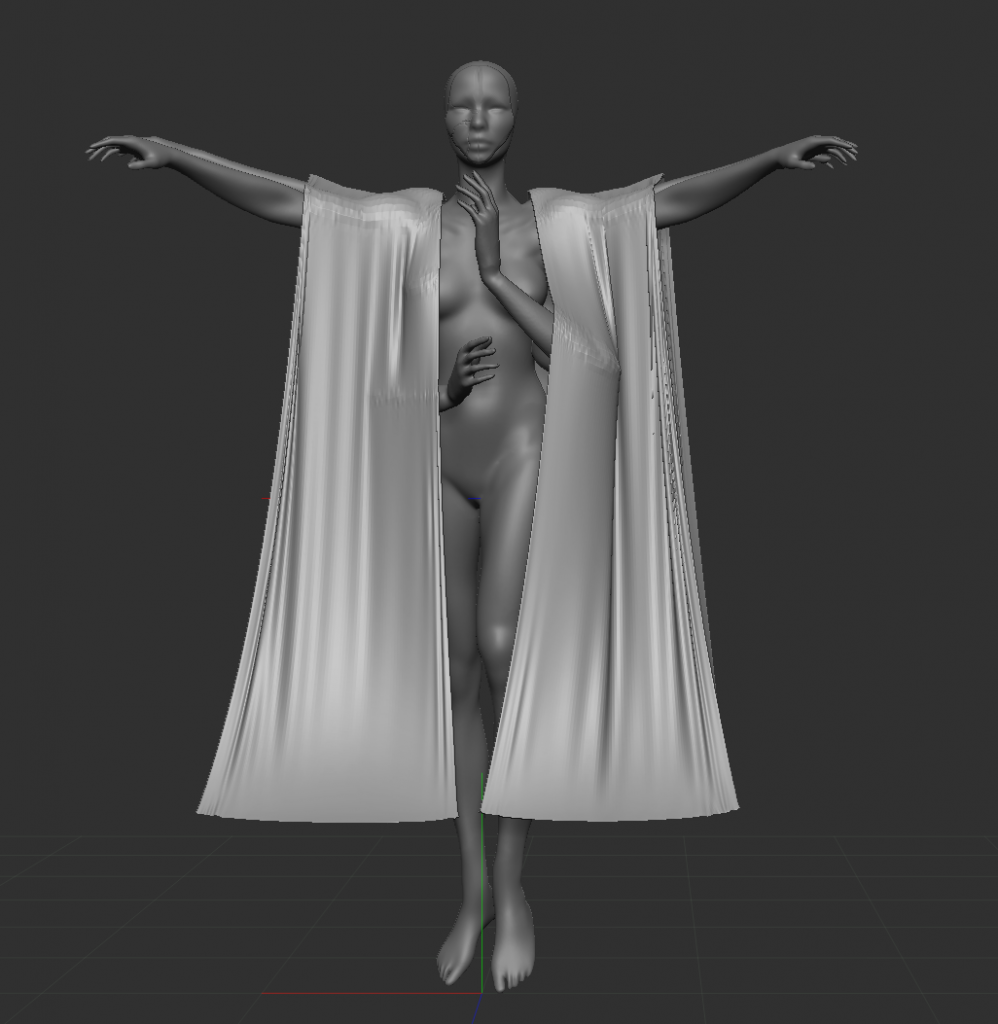
This was the first development I took inspiration from the references me and Laura had acquired as well as Laura’s own sculpt which you can see here: https://dextergamesart.myblog.arts.ac.uk/2024/10/07/games-art-final-major-project/
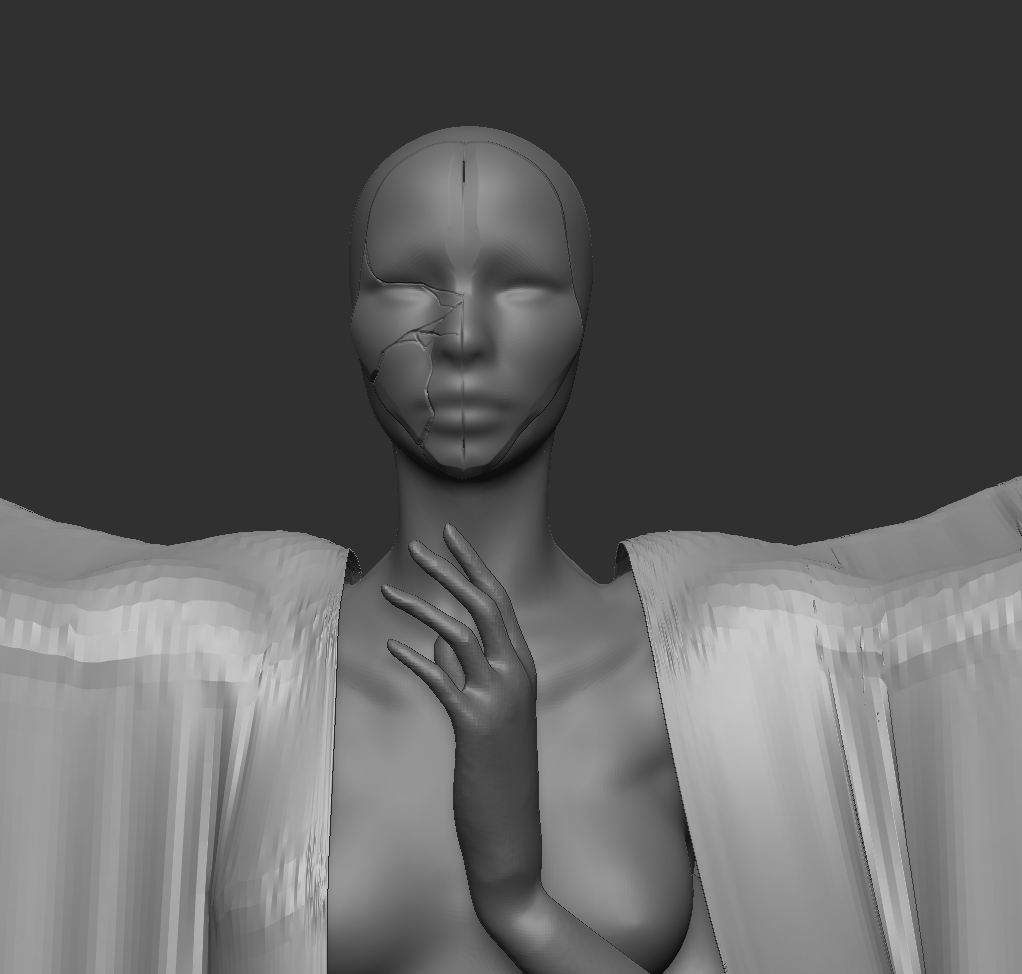
I started working with this Idea of a mask on the statue as masks are suggestive of mysteriousness or deception as if to suggest it’s trying to withhold it’s true twisted nature behind a angelic façade.
Further adding to this idea I wanted to have it even more cracked and maybe starting to fall apart and show it’s true dark nature withing.

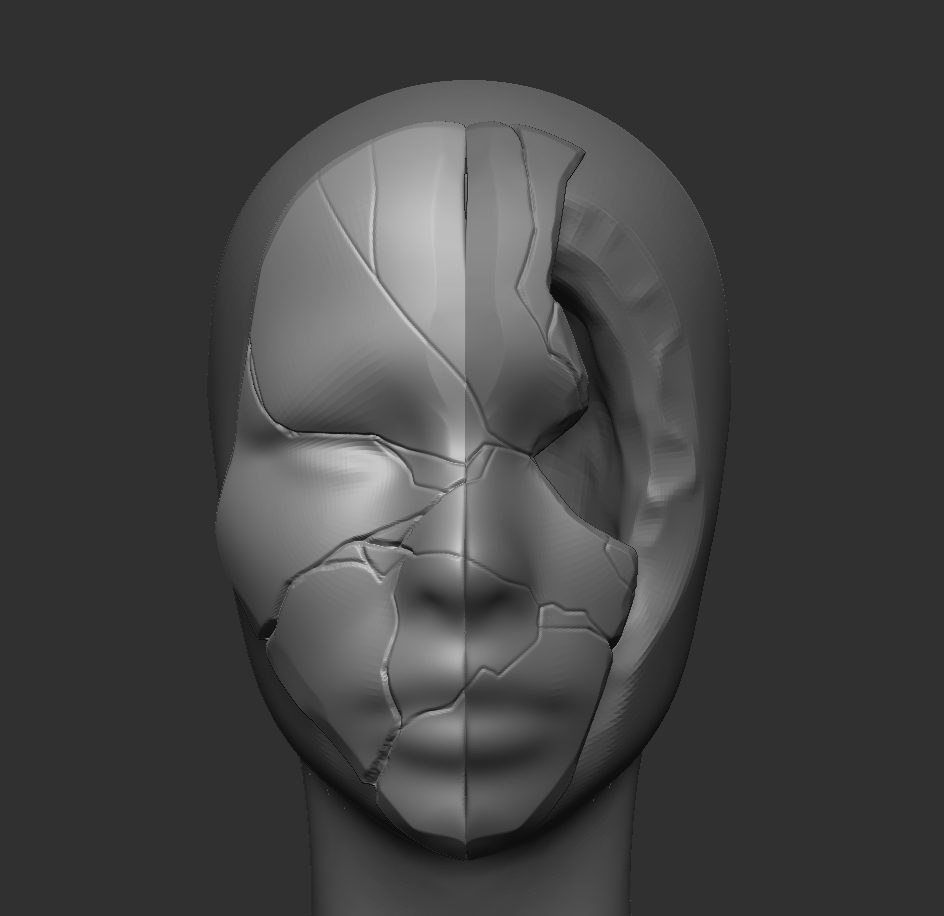
We discussed the idea of this ominous dark void behind the mask something sinister and alien, which was inspired from the Taiwanese horror Incantation (2022) the Face of the Goddess at the end with a gaping maw instead of a face.
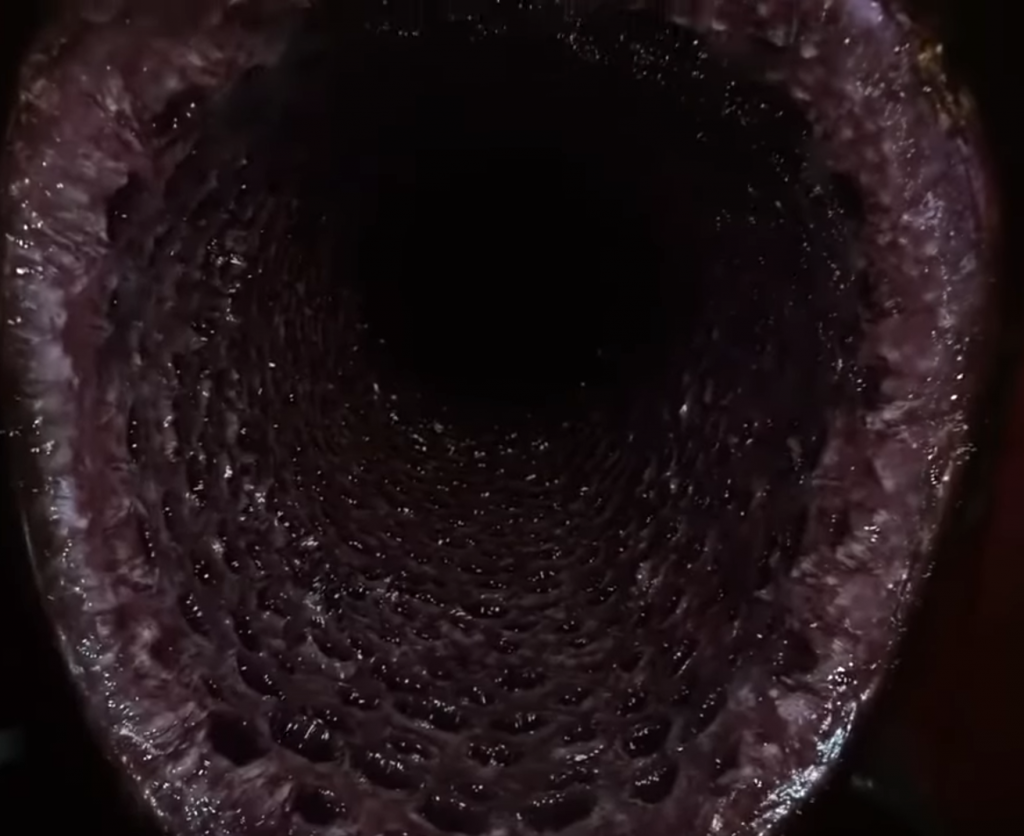
Feeling content with the sculpt at this phase with the sculpt an idea I took it over to Photoshop to place it in an environment and try to develop the concept in 2D based on the ideas we had previously made.
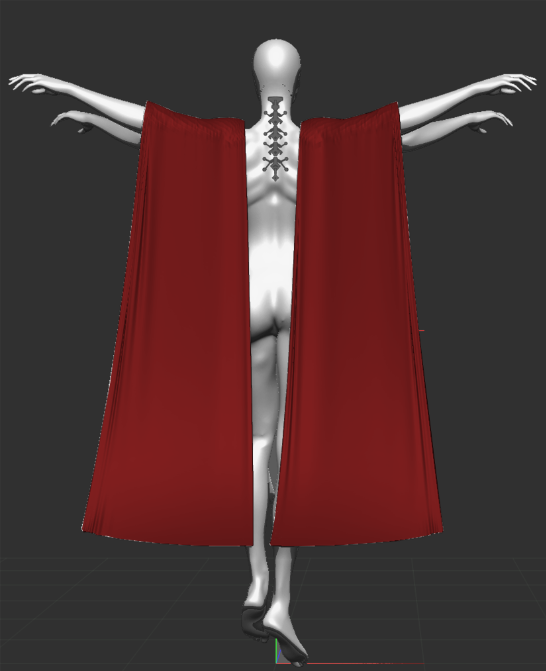
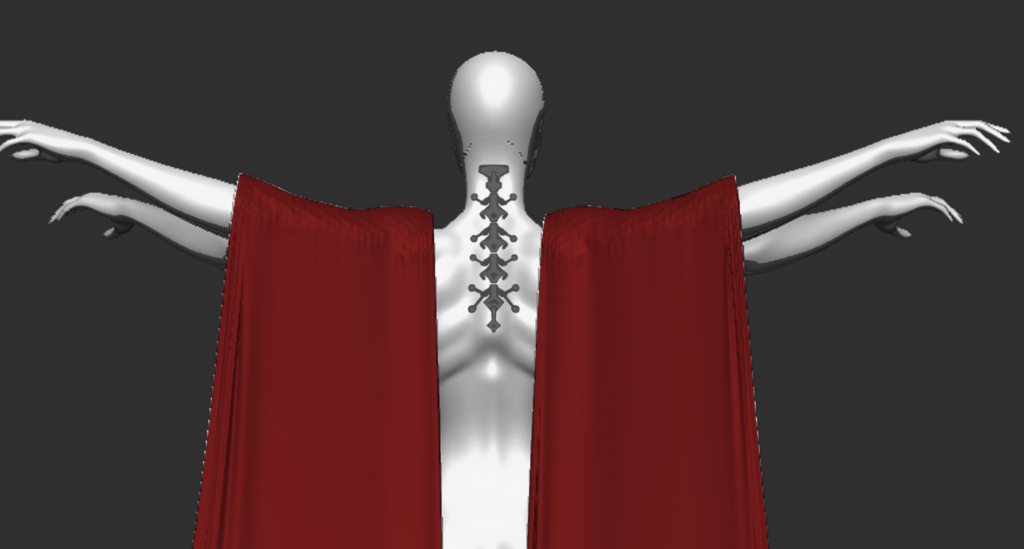
I firstly made the statue a lot paler a bit like the Engineers from Prometheus and changed the robes to a regal/blood red which compliments the pale complexion I then had a look at the Sandevistan spine implant from Cyberpunk 2077 and the spine element from the characters in the Astartes Warhammer fan film.
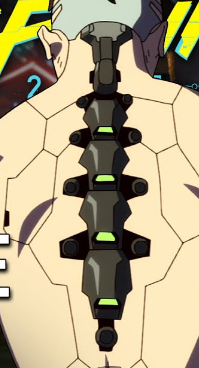
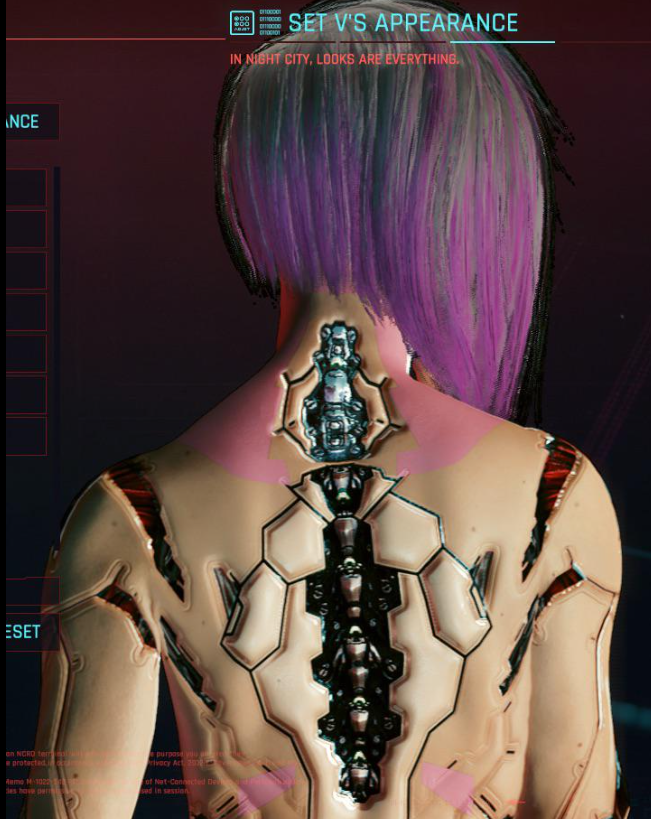
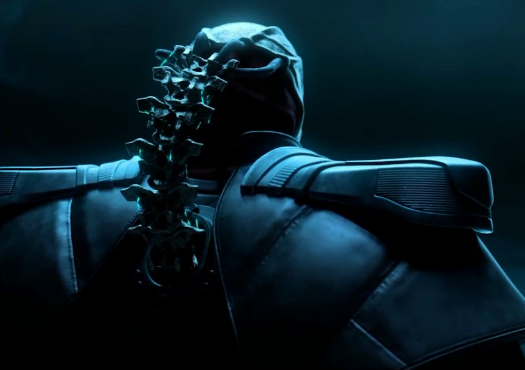
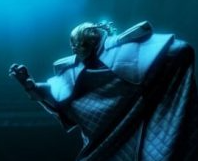
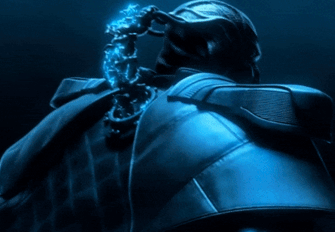
Following this idea i decided to do an in-situ design for the statue so I did a quick environment based of a concept I found online and placed the statue in there including the chains holding it down.
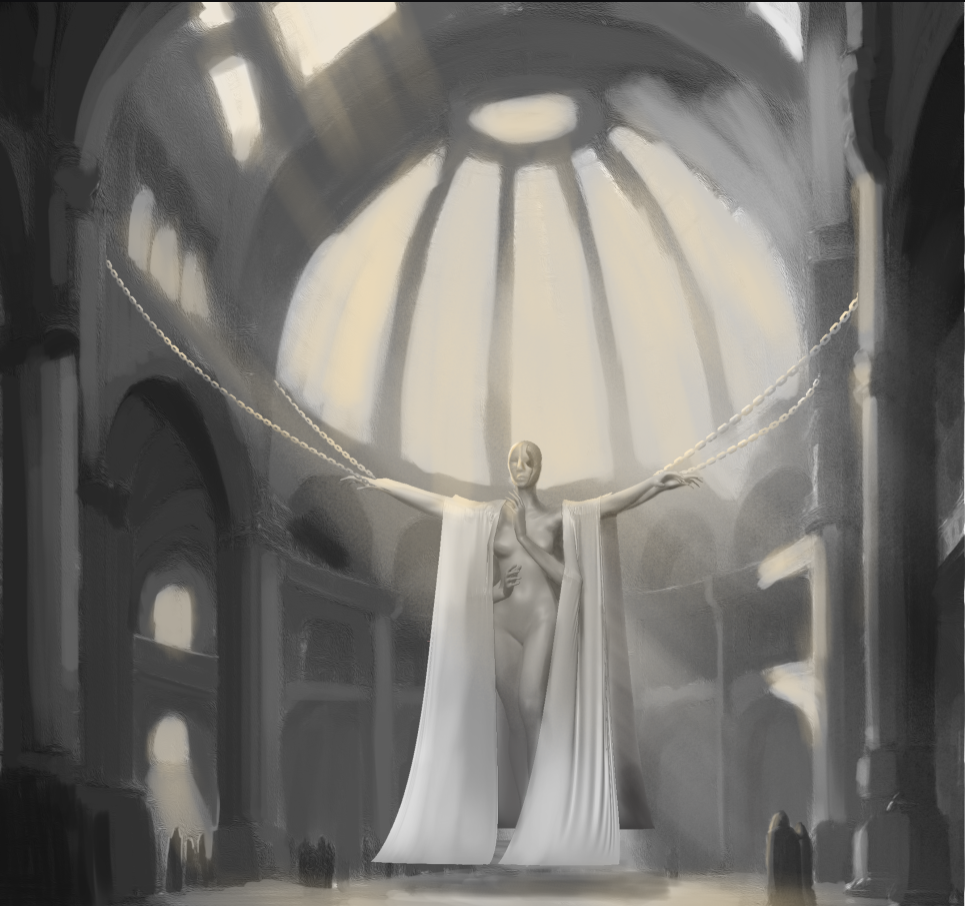
In this next one I tried adding the blood tubes/pipes used to pump blood into the statue and the well/basin at the bottom where they can poor the blood in to fuel the tubes. I also added some warmth from the sunlight and made the mask subtly gold to create a false sense of royalty or angelic nature.
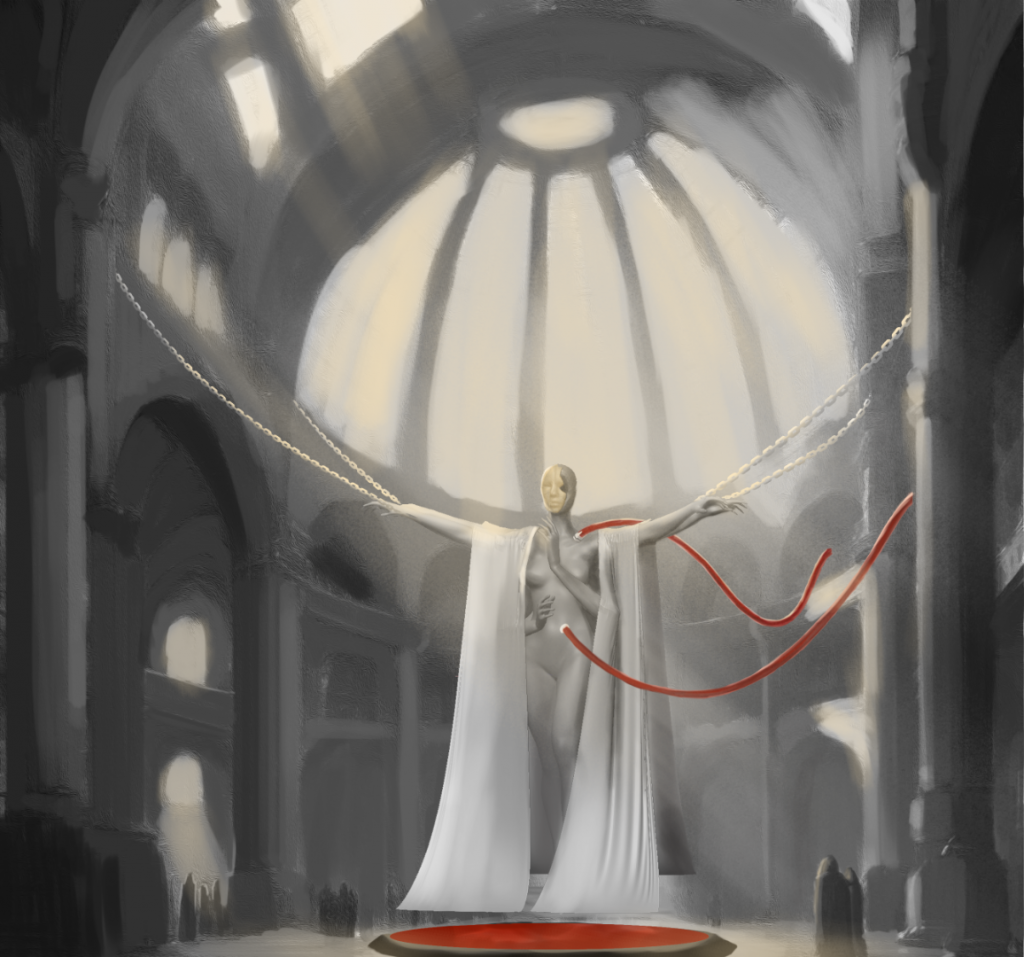
After producing these I wanted to take the ideas and utilise ChatGPT as I have found in the past that AI can be useful to iterate ideas really quickly which can help with idea inspiration. So using my sculpts/paintovers and written prompts I generated the following.
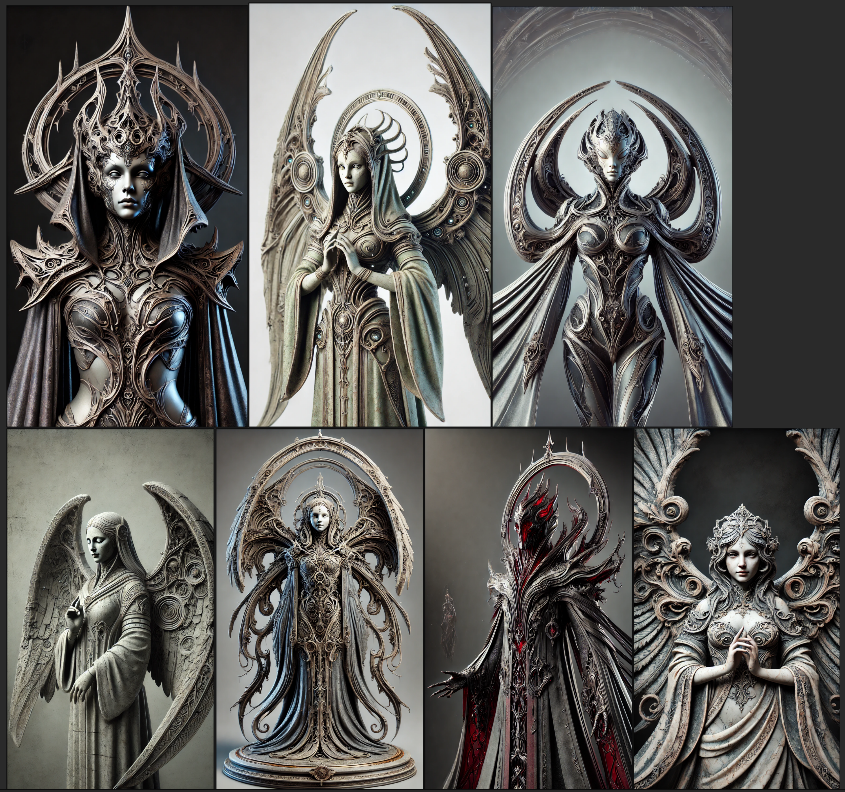
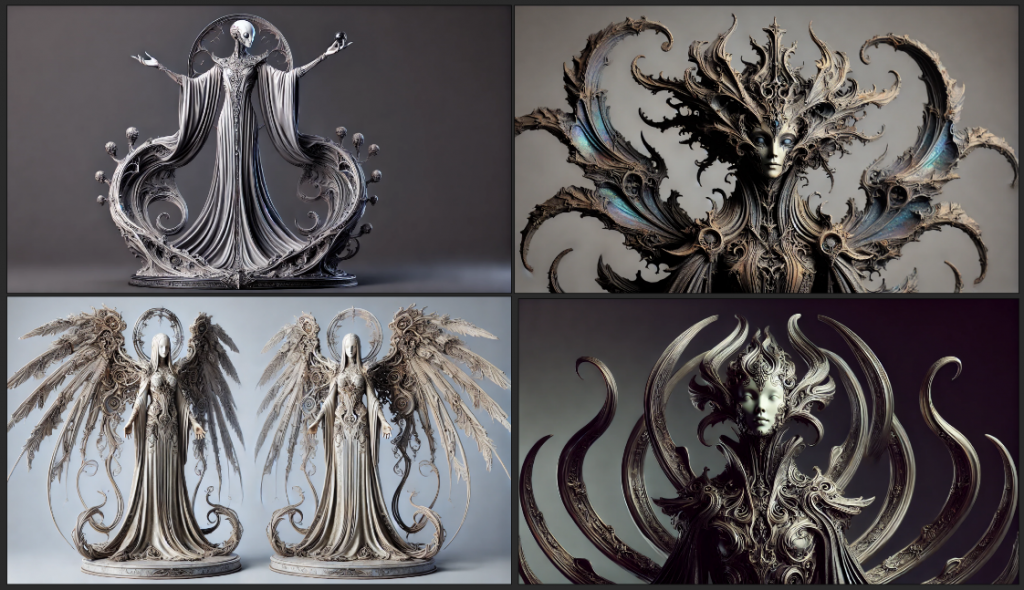
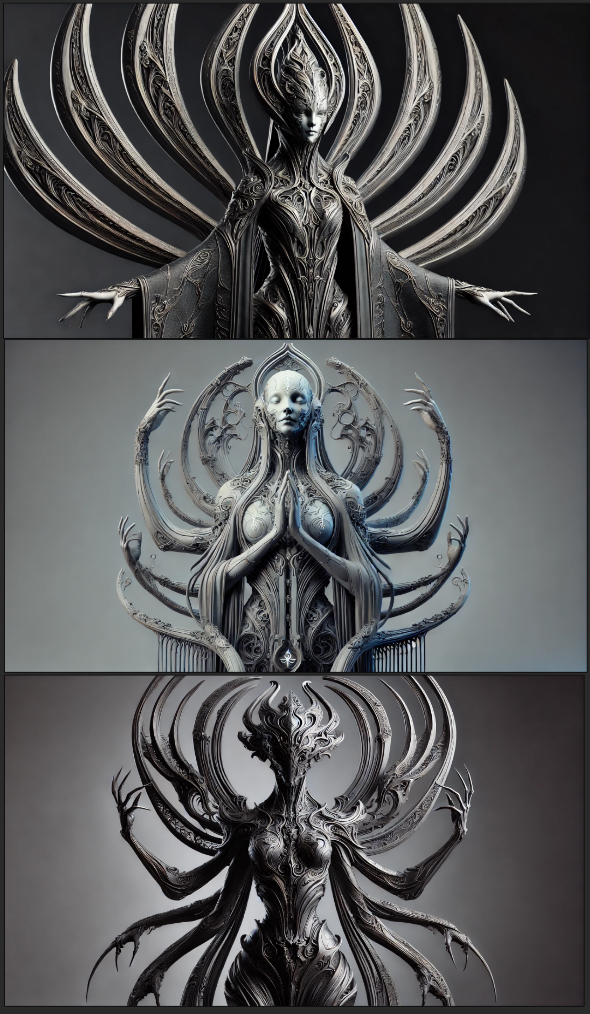
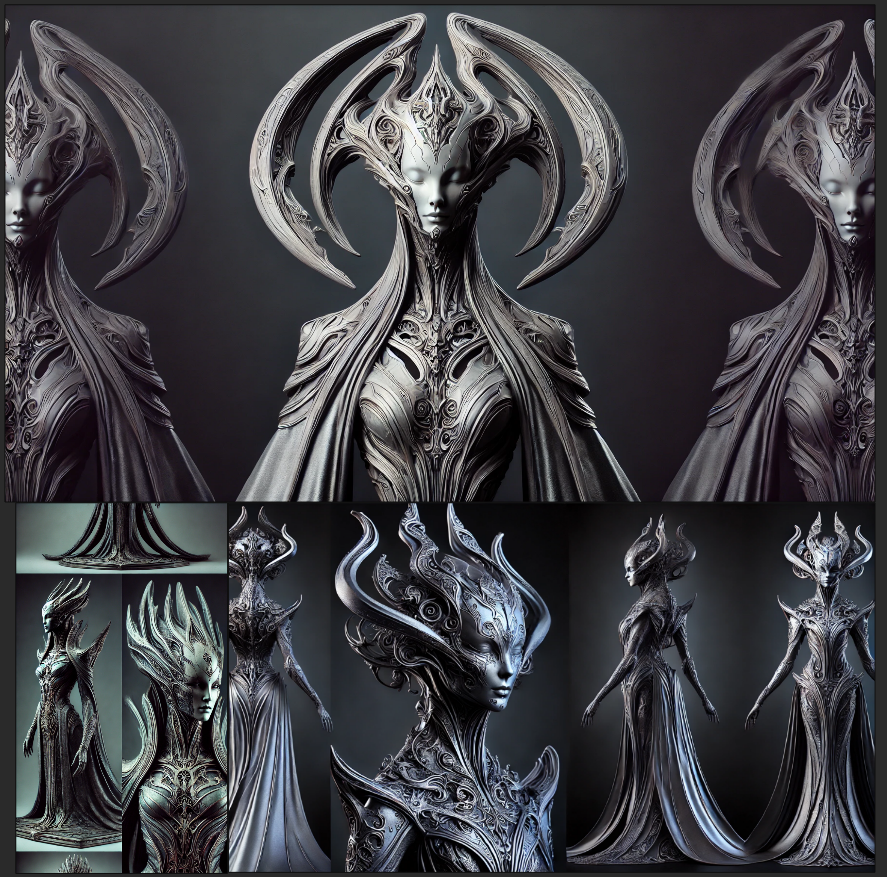
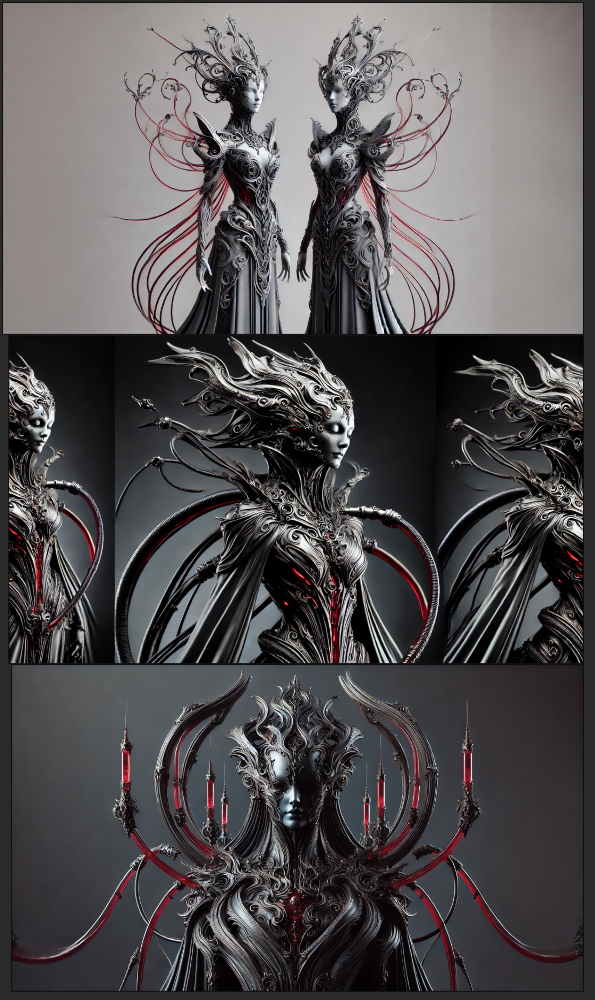
Conclusion:
It was a successful use of the tool and led me to having a better idea of what we wanted to achieve aesthetically there were a few stand out renders that felt strongest, here are my top 3.
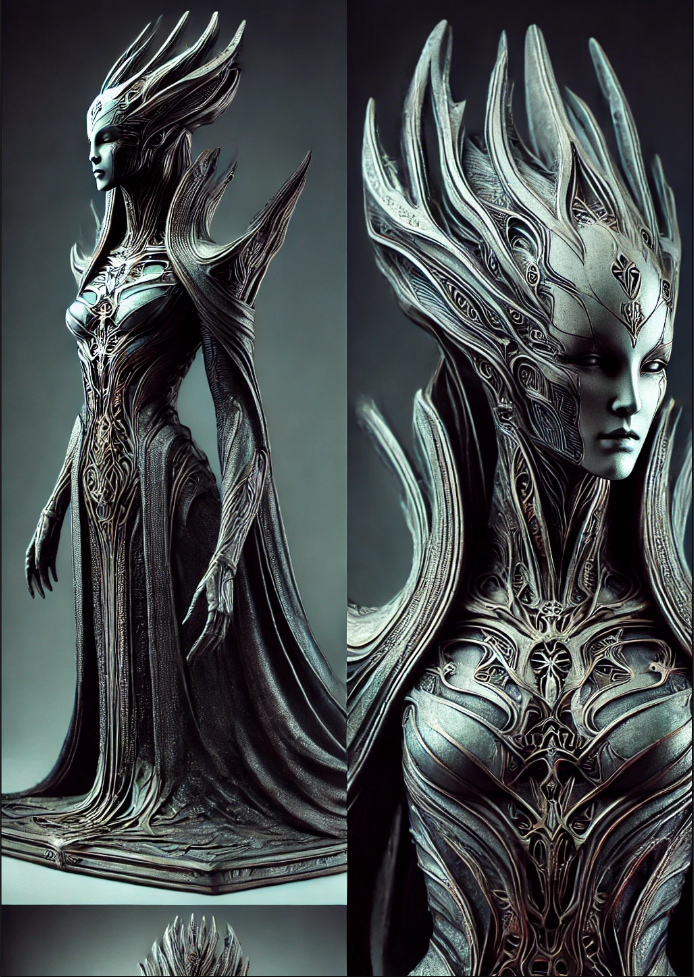

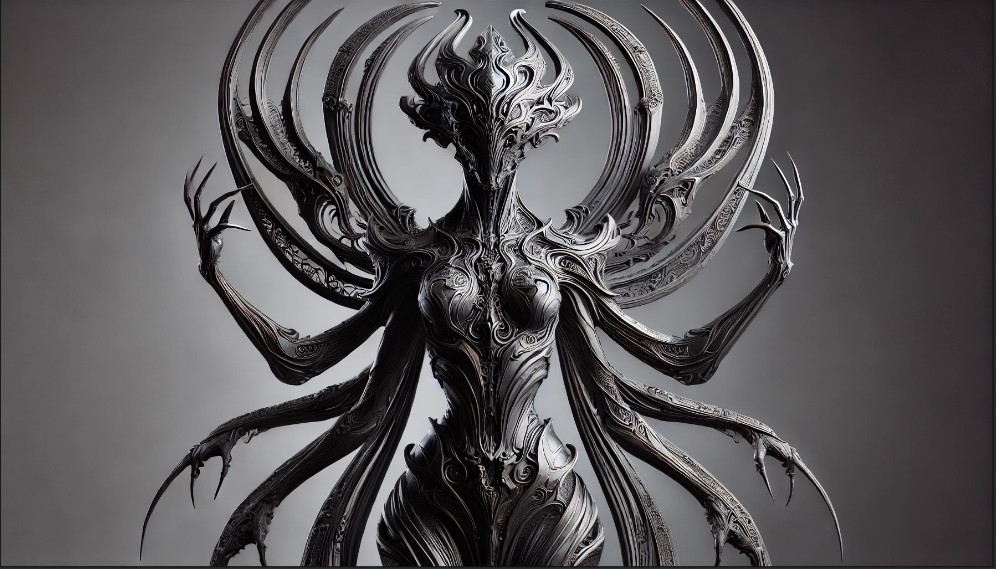
Pillars:
Feeling happier with the ideas for the statue concepts I began to start on some elements for our vertical slice, Laura started off with arches for windows and I started on some pillars.
I started by acquiring a variety of references on top of the ones I already had acquired in my initial research.

I also did some research into the different structural elements of a column/pillar so I can use the correct naming conventions and learn more about how to make it structurally viable, in doing so It should aesthetically look correct.
Here’s a list of different kinds of columns and a brief description based of this list https://www.indeed.com/career-advice/career-development/types-of-columns.
- Ionic: Originating from Eastern Greece, Ionic columns are slender and ornate, featuring scroll-shaped capitals and detailed bases. Common in 19th-century entryways.
- Colossal: Tall, Renaissance-era columns spanning multiple stories, often used in large, grand buildings like churches.
- Corinthian: Lavish columns with wide bases and decorative capitals featuring floral motifs, commonly seen in government buildings and museums.
- Doric: Simplistic, short, and heavy columns from Western Greece, suitable for smaller buildings or adding subtle elegance to porches.
- Composite: A blend of Ionic and Corinthian styles, featuring both scrolls and floral designs, used for sturdy yet visually appealing structures.
- Solomonic: Spiraled, slender columns used as decorative elements, often seen in hotels and ornamental designs.
- Postmodern: Contemporary square columns from 1996, typically tall and arranged in rows for modern architectural styles.
- Egyptian: Elaborate columns with carvings and colorful motifs of plants like palms and lotuses, inspired by ancient Egyptian designs.
- Fluted: Egyptian-inspired columns mimicking bundled reeds, often decorative and suited for single-layer support.
- Craftsman: Also called bungalow columns, these simple, square, sturdy designs support roofs and are common in 20th-century homes.
- Tuscan: Smooth-shafted, short, and heavy columns resembling Doric columns, popular for older homes with a classic look.
- Persian: Ornate columns featuring animal motifs like bulls or horses, adapted worldwide for decorative purposes.
- Superposed Order: Multi-style columns combining Doric, Ionic, and Corinthian designs, typically found in grand historical structures.
- Palmiform: Ancient Egyptian columns with wide bases and floral or geometric designs, used for supporting large temples.
- Coniform: Tree-inspired Egyptian columns with thick shafts and flaring tops, designed for strength and durability.
- Papyriform: Egyptian columns with circular or ribbed shafts resembling papyrus plants, featuring open or closed bud designs.
- Campaniform: Flower-inspired columns with intricate carvings, adapted by various cultures for unique decorative styles.
- Tent Pole: Early Egyptian columns of wood or stone, originally supporting lighter structures like tents and shrines.
- Hathoric: Middle Kingdom columns with capitals shaped like Hathor, the cow-headed goddess, found in temples.
- Osiride: Egyptian columns featuring a front relief of Osiris, commonly seen in temples.
- Romanesque: Trapezoidal bases with floral designs, used in 19th-century American homes for porches and entrances.

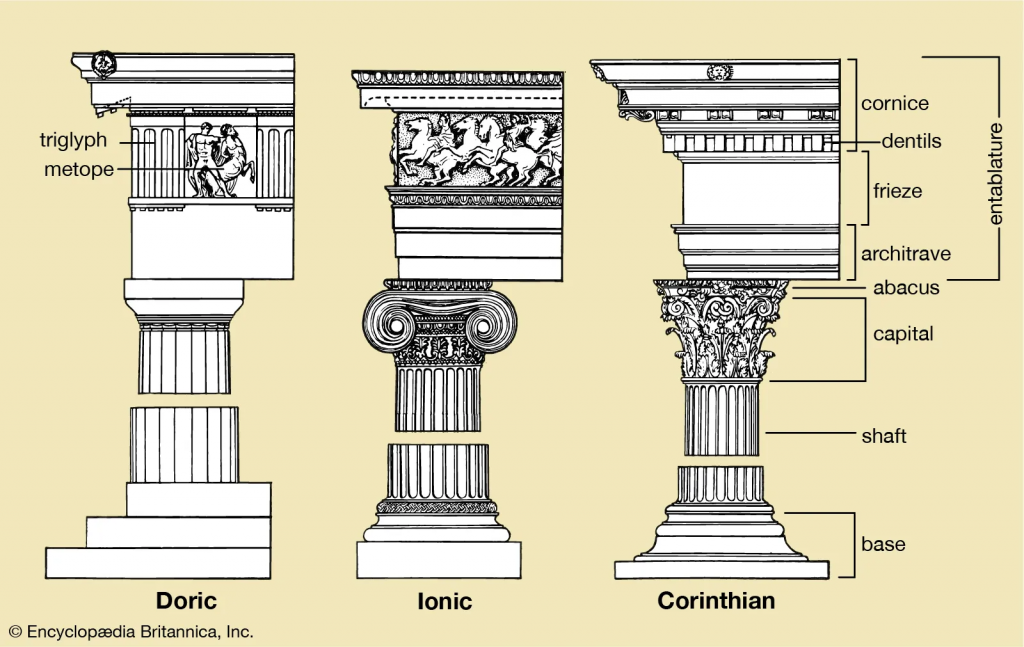
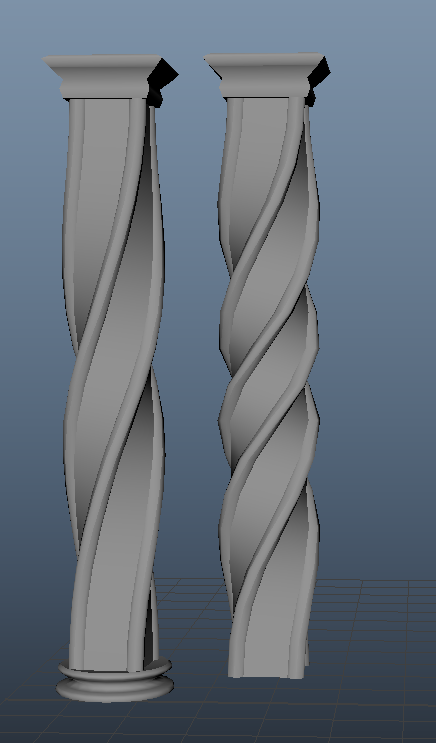
I liked the twist in this but felt it was less common in the gothic aesthetic and wanted to get a staple element so I worked on some cylindrical pillars.
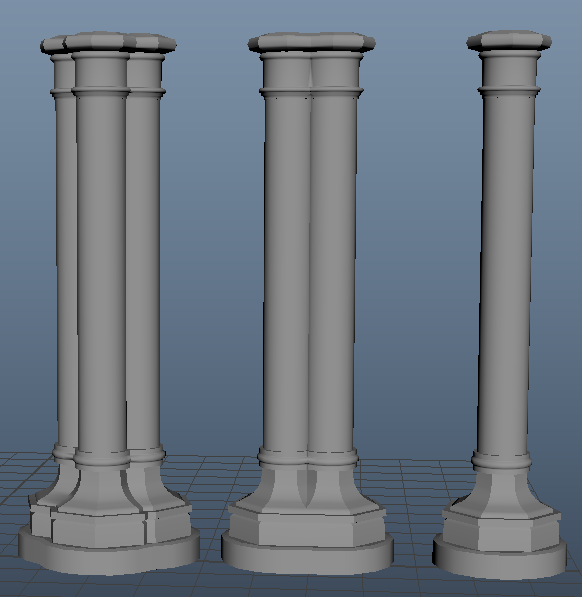
Here is my first go at cylindrical pillars in a single, double and quad variation they worked well but are a bit bottom heavy although I liked the shape of the bottom.
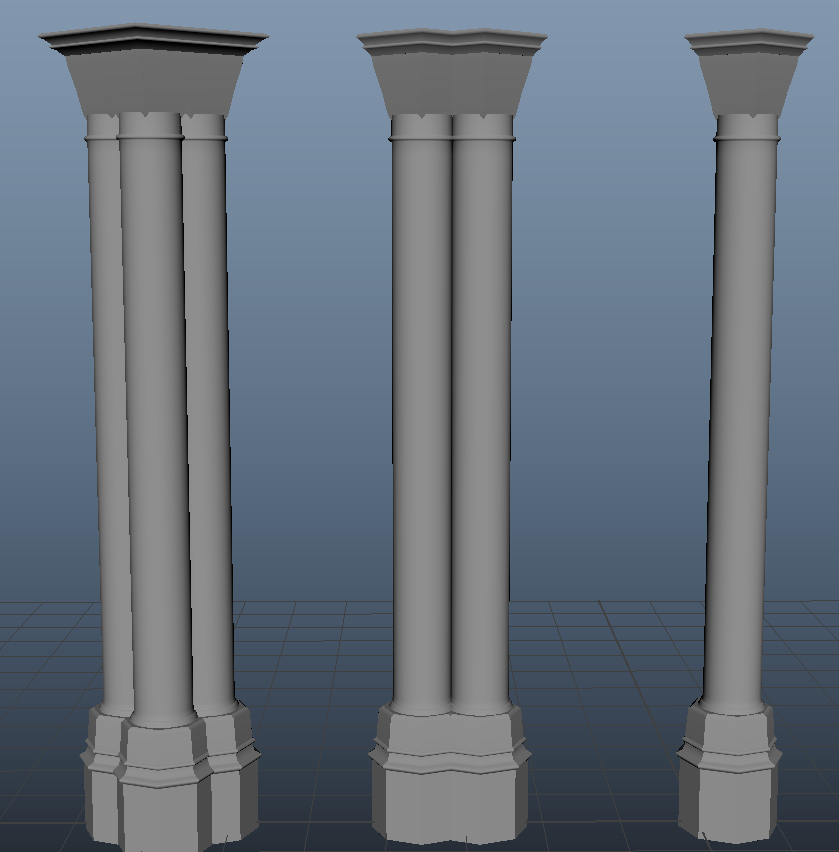
Here is my next variation where I tried to make it not too bottom heavy ignore the top of the pillars as this is currently a place holder but will later have some engravings and tracing as seen in traditional gothic pillars.

Here you can see my pillars alongside Laura’s Windows/Arches which are looking pretty nice. I continued to mess around with the different arches and pillars to try different set ups that would work and make it easy to have a consistent vaulted ceiling.
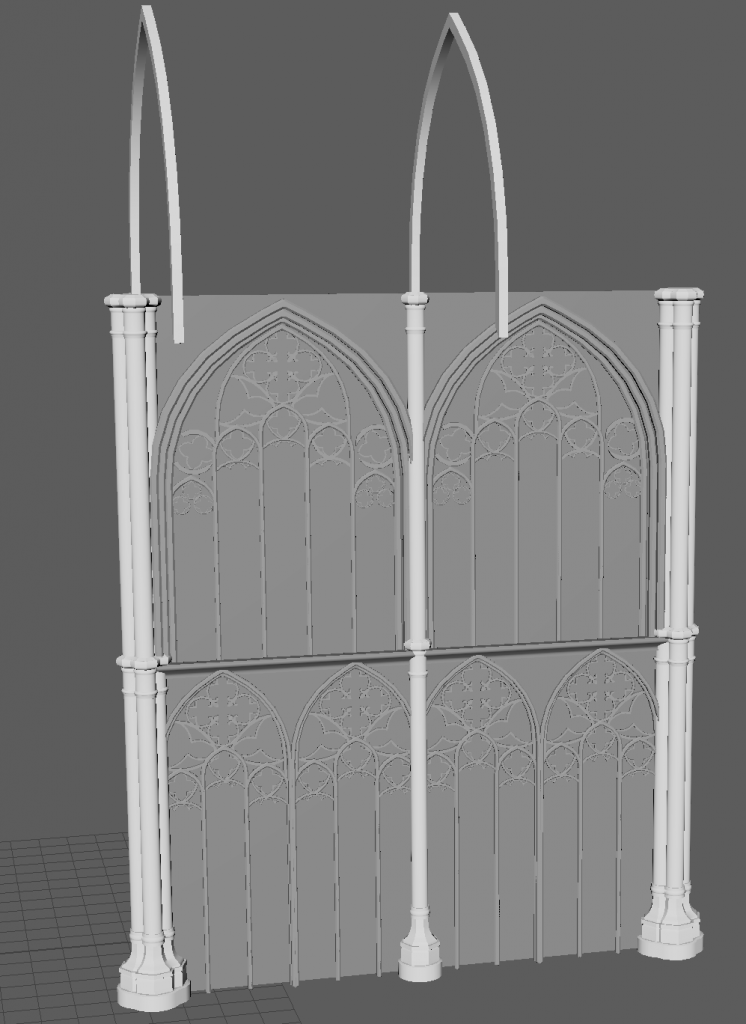
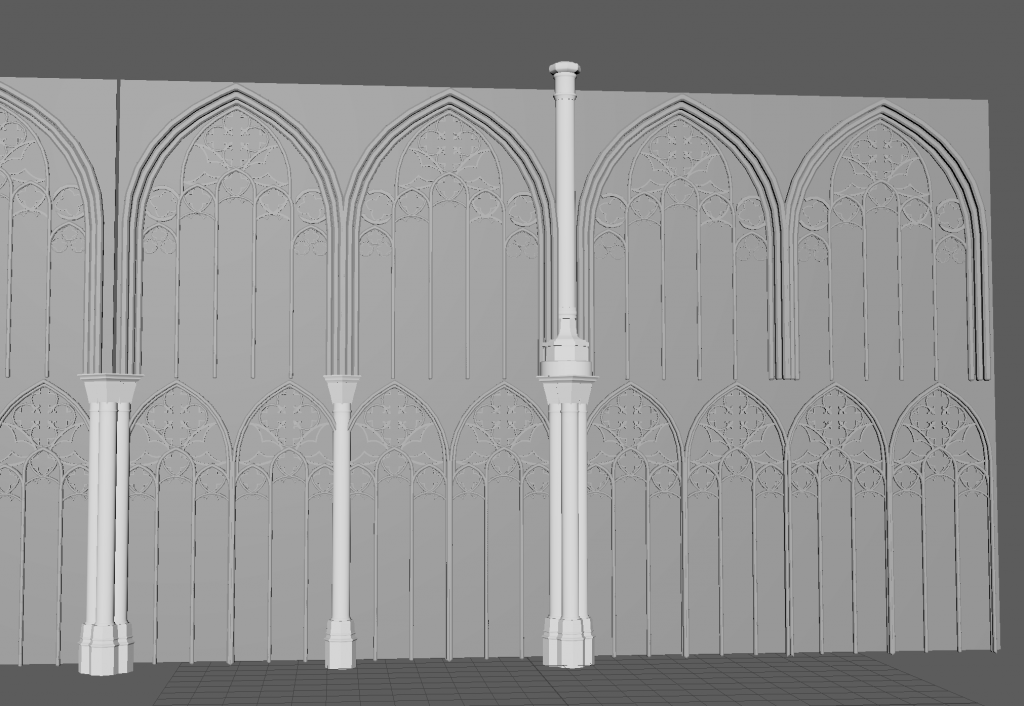
Leave a Reply